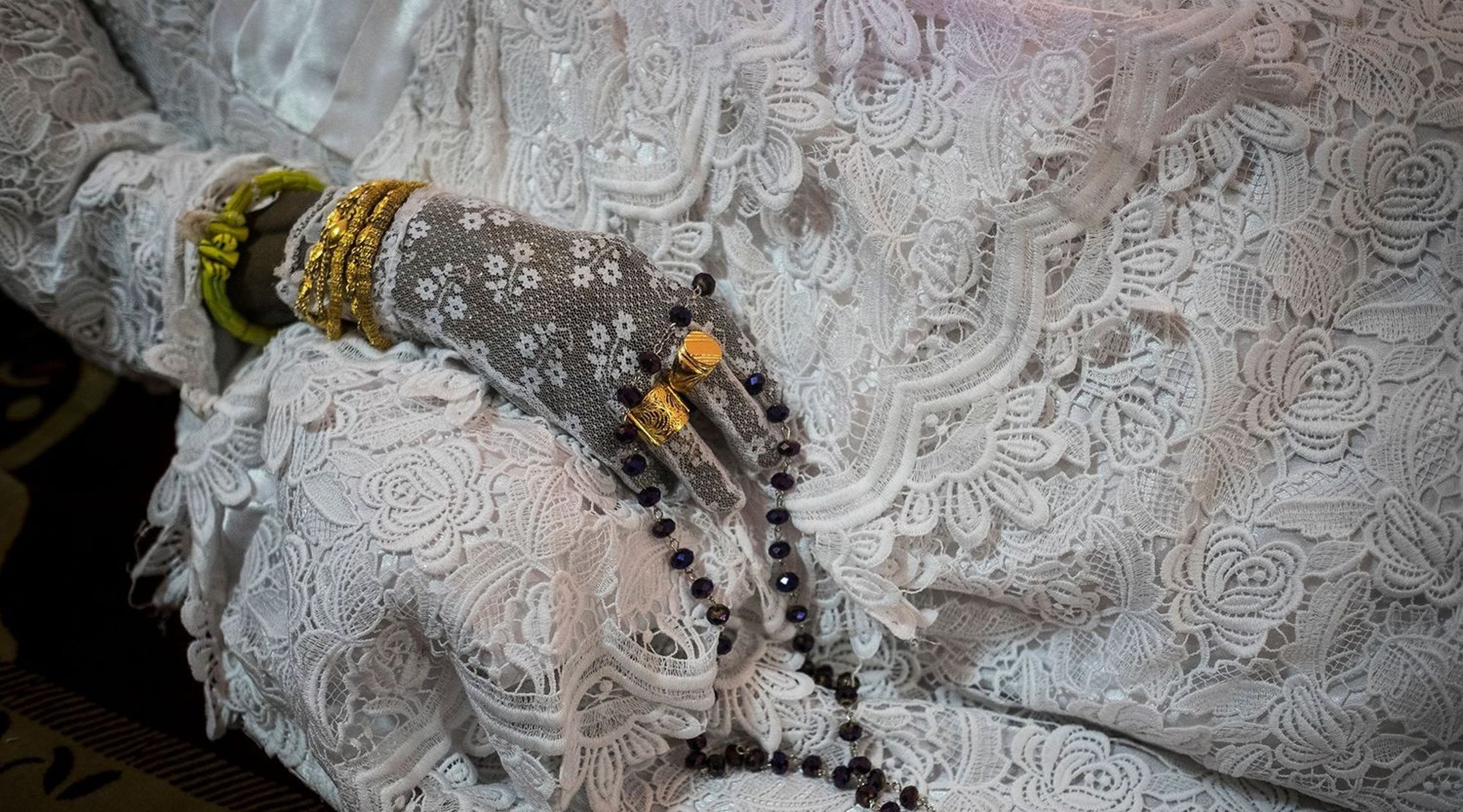Traveling with death is dangerous. Danish photojournalist and visual anthropologist Klaus Bo has endured a host of accidents and mishaps on his years-long journey to document death rituals around the world, including motorcycle crashes on his way to a rare ceremony in a remote village in Indonesia and in the mountains of Nepal, a threat on his life in Haiti, a two-meter fall into a deep hole in Mexico and even a voodoo spirit that gave him horrific nightmares.
But traveling with death is also beautiful and important, according to the photographer. His Dead and Alive is now a lifelong endeavor, and he isn’t deterred by the danger. “When you travel off the beaten track with death as the subject,” Bo says, “interesting things will happen—as long as you travel with an open heart and mind.”
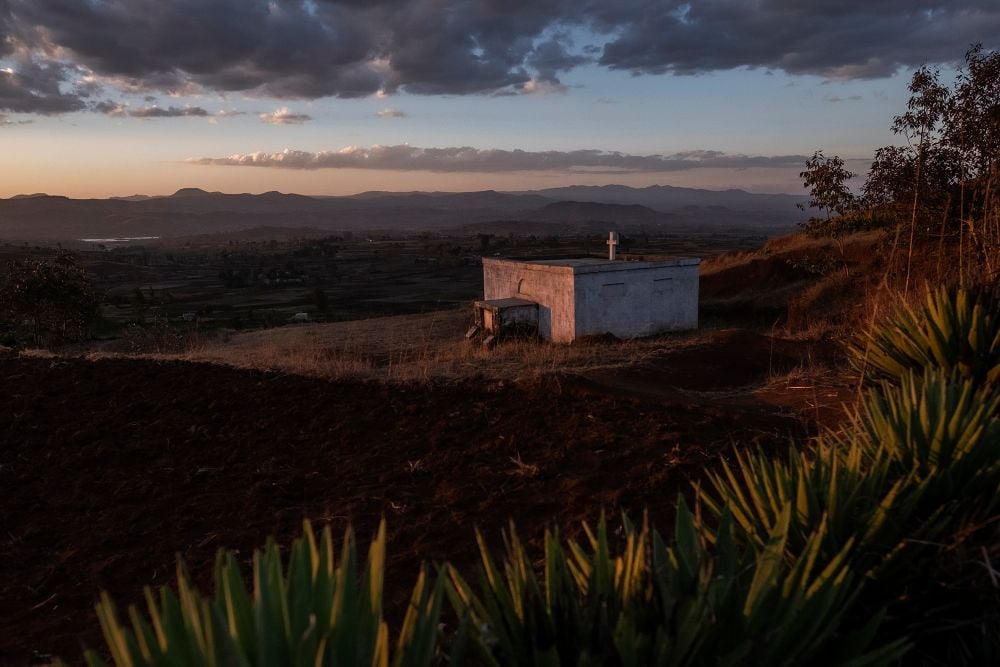
In 2002, Bo documented a public Muslim funeral at a mosque in Copenhagen. He’d been covering the community as a freelance photographer and received permission to attend. The seed for the Dead and Alive was planted when he took a photo of a young boy looking with innocent curiosity into the coffin of the deceased Pakistani man, his body lying in state for viewing before being sent back to his home country for burial in consecrated soil.
“It made me think of how big a taboo death is and was in my part of the world,” Bo says, adding that he himself has dealt with anxiety from a lifelong fear of death. “I also realized that for some reason I always hide a personal story that happened a few years before I took the picture in the mosque. I have no idea why. A few years before that pivotal photo, a very dear woman I was in love with suddenly died.” After the death of his love, he felt utterly alone in the world and sensed his Western culture’s taboo of death in his own body.
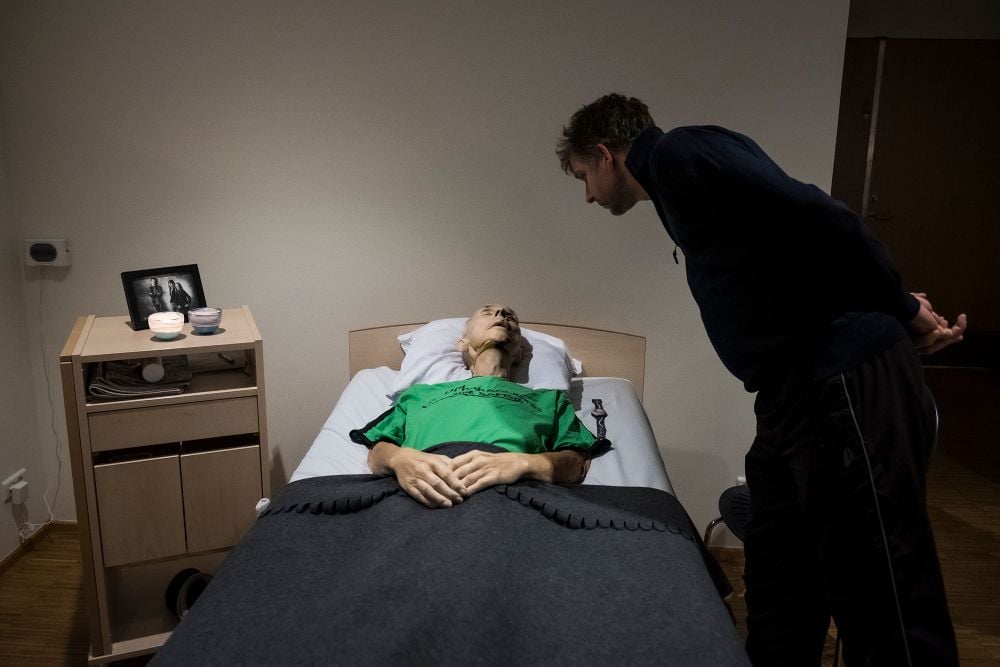
“At that same time, I was traveling a lot—for work but I also went abroad on my own to cover cultural issues and various topics in conflict and disaster areas, including Iraqi refugees in Syria, Haiti after the earthquake, the masked women of southern Iran, and the Holi festival in India.” During his travels, the seed for Dead and Alive began to sprout.
But it wasn’t until nine years later in Greenland while documenting a visit by the Danish Queen and her husband, that Bo’s determination and passion for making a record of global death rituals and experiences really took shape. “In Upernavik, north of the Arctic Circle, the Queen couldn’t land due to bad weather, so we (the Danish press) were stuck for a day up there. I decided to take a look at the cemetery, where I actually made the first real shot for the project,” Bo explains. “The picture from Upernavik convinced me that the story was visual.”
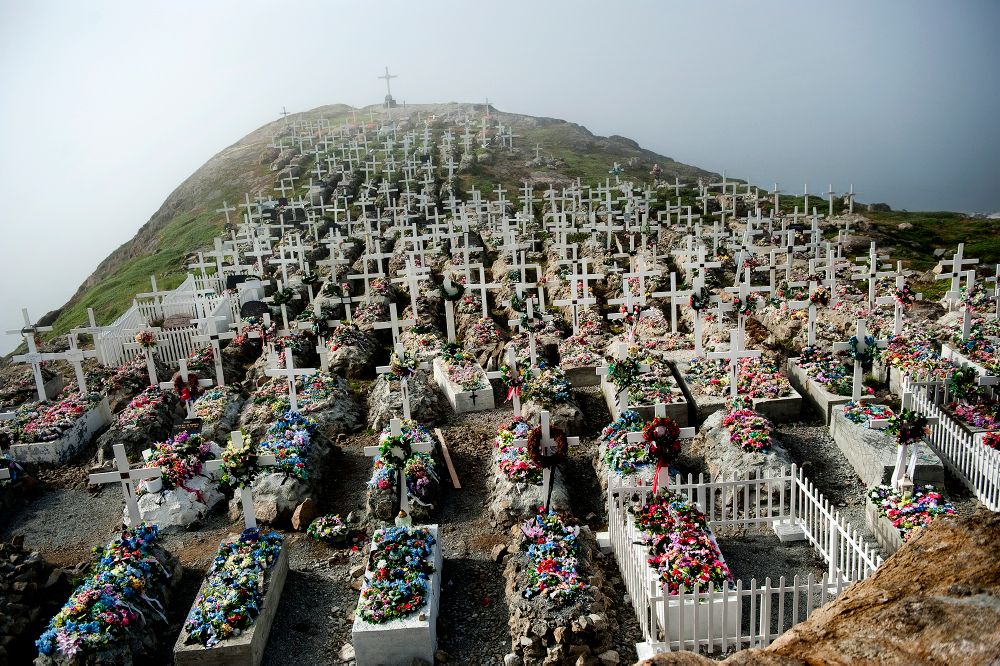
He told colleagues about his idea but was met with skepticism. He then put together a project team that included another photographer, two journalists, a fundraiser and an ethnologist. They spoke to some big foundations in Denmark. But after a year and many meetings about how the project should go forward, they hadn’t raised a cent.
“I was tired of talking and talking. I decided to go to Haiti on my own to check things out,” Bo says. “I’d been there four times before, and I had a very good Haitian friend I could use as a fixer who unfortunately has since passed away… It was a rough trip and it lasted nine weeks, but I managed to document some interesting Voodoo rituals that no one had ever heard about before. And the trip made me even more certain that there was a ‘hidden story’ here—the Dead and Alive project.”
Since 2010, Bo has continued to travel the globe on his solo quest to document death rituals of the five main religions (Islam, Christianity, Judaism, Buddhism and Hinduism) as well as various other worldwide customs rarely seen by outsiders. He carries a small camera, works hard not to disturb rituals, immersing himself in whatever situation he encounters and is open and honest about why he is there. He’s never been refused, and feels that the people he encounters are proud to show their traditions.
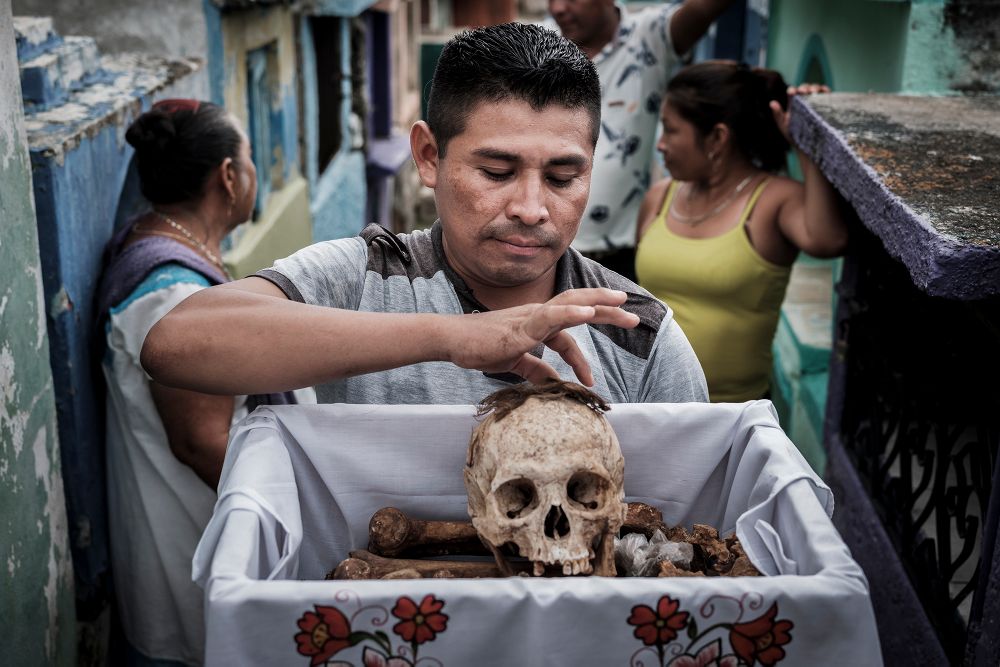
Bo’s images are expertly made, sometimes shocking, yet also shimmering with a kind of sublime beauty. His starkly honest photographs literally look death in the face and represent what is currently the world’s largest collection of photographs on the subject of death rituals around the world, as far as he is aware. “Nobody has ever done a project about how these rituals actually reflect the lives of the living,” he says.
The wide gamut of rituals Bo has documented show just how diverse and different our relationship to death can be. In Haiti, Bo was told he’d be killed if he attended a secretive death ritual. He was then granted permission and boldly went ahead. He documented a Voodoo priest extracting the spirit (Damballah) of a deceased young Voodoo priestess (Mambo) in a rarely seen ceremony. The priest then gave him the spirit. He took it home to Denmark and placed it in his bedroom. He says terrible nightmares ensued and only subsided when he moved it to another room.
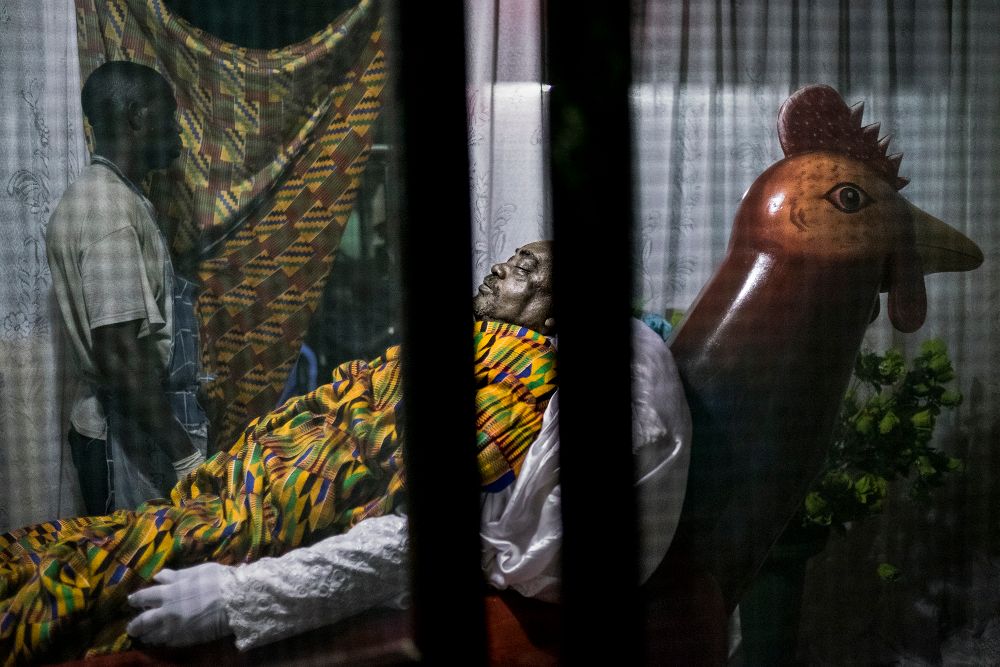
In Ghana, the deceased are buried in beautiful handmade coffins representing their occupation or passion in life. For instance, Bo photographed the funeral of a chicken farmer, his body lying in state in an elaborately designed and colorful chicken coffin. In Indonesia, some communities hold a Ma’nene ceremony where dead relatives are removed from family graves. The corpses are cleaned, in fresh clothing. “Before they are put back, family members have photos taken with them,” Bo says. The Malagasy people of Madagascar have a funerary tradition called the Famadihana where the family tomb is opened and ancestors are removed, prayed over with music and dancing, and re-wrapped in fresh silk before being returned to the crypt.
Continuing Dead and Alive, a completely self-funded project, is a constant struggle for Bo, who has sold personal possessions, given up professional freelance work and gone into debt for the effort. He’s working on securing funding and monetizing the project through book publishing, speaking engagements and exhibitions. He is also working with a Danish television channel on an upcoming program.
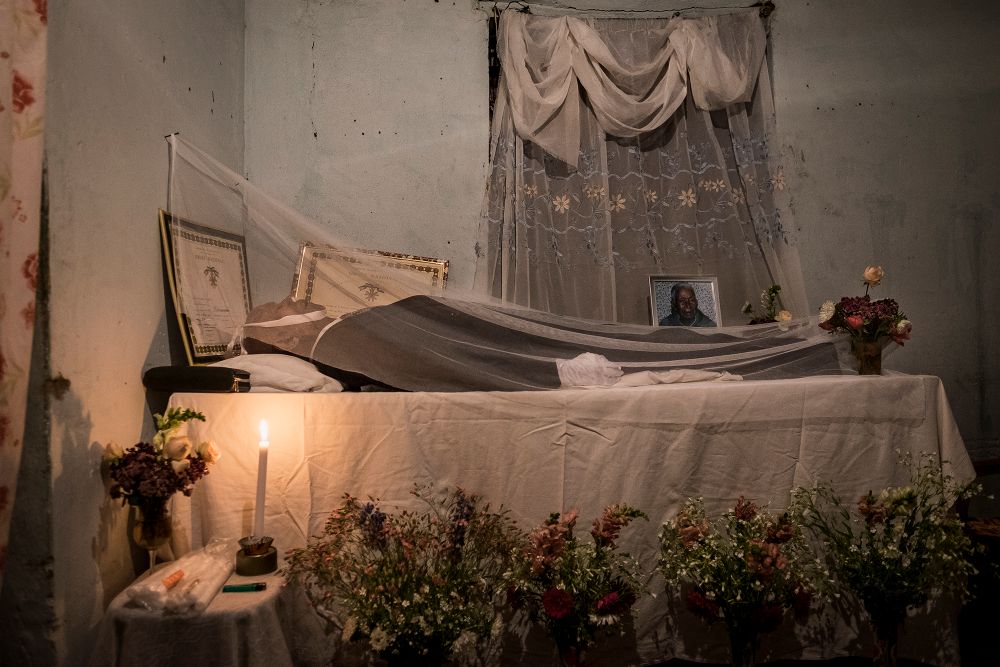
But just as he doesn’t fear danger, he’s not afraid of personal loss for the sake of keeping the project alive, which he sees as the record of important world heritage. “If I had the money for it, I’d be traveling much more on the project. I have a list of 40-plus rituals around the world I would still like to document.”
Many rituals are slowly disappearing due to rising costs, modernization of societies, missionary work, loss of faith and the like. In a way, this project is a historical document on death rituals in the early 21st century.”
In 2018, Bo received the ‘Life and Death’ award from the National Life and Death Association of Denmark, where atheism is the norm and like in many Western countries, a death ritual consists of a brief funeral service followed by coffee and cake. “We are probably afraid of approaching death in our part of the world,” the award statement reads, “but with Klaus Bo behind the camera, we dare to get a little closer.”

